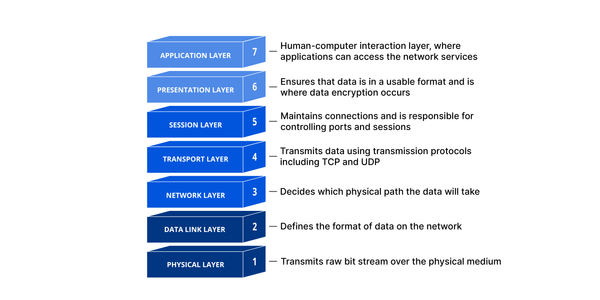In the realm of network management, understanding IP addressing is crucial. One fundamental concept in this area is CIDR blocks. CIDR, or Classless Inter-Domain Routing, has revolutionized how IP addresses are allocated and managed, offering flexibility and efficiency that wasn't possible with the older class-based system. This blog post delves into what CIDR blocks are, why they are important, and how they are used in modern networking.
What are CIDR Blocks?
CIDR blocks represent ranges of IP addresses. The concept of CIDR was introduced in 1993 to replace the previous system based on address classes (Class A, B, and C). Instead of rigid classes, CIDR allows for more flexible allocation of IP addresses by using variable-length subnet masking (VLSM).
A CIDR block is expressed as an IP address, followed by a slash ("/"), and then a number indicating the prefix length. For example, the CIDR block 192.168.0.0/24 encompasses all IP addresses from 192.168.0.0 to 192.168.0.255. The "/24" means that the first 24 bits of the IP address are fixed, and the remaining 8 bits can vary.
Why CIDR Blocks are Important
- Efficient Use of IP Addresses: Before CIDR, IP addresses were allocated in fixed blocks, often leading to wastage. For instance, a Class C network would always have 256 addresses, even if only a few were needed. CIDR allows network administrators to allocate IP addresses more precisely, reducing wastage.
- Simplified Routing: CIDR improves the efficiency of routing tables. By grouping IP addresses into larger blocks, routers can maintain fewer routes. This process, called route aggregation or supernetting, helps in managing the global routing tables that internet backbone routers use.
- Scalability: As networks grow, the flexibility of CIDR allows for more scalable network design. Networks can be divided into subnets of varying sizes based on need, rather than being constrained by the old class-based system.
- Enhanced Network Security: CIDR can also aid in implementing network security measures. By organizing IP addresses into blocks, it becomes easier to apply access controls and manage traffic more effectively.
How CIDR Blocks are Used
- Subnetting: Subnetting divides a larger network into smaller, manageable pieces. For instance, a company might use a CIDR block of
10.0.0.0/16for its internal network, which provides 65,536 IP addresses. This can then be further divided into smaller subnets like10.0.1.0/24,10.0.2.0/24, and so on, each providing 256 addresses. - Route Summarization: In a larger network, multiple subnets can be aggregated into a single route for simpler routing. For example, subnets
192.168.1.0/24,192.168.2.0/24, and192.168.3.0/24can be summarized into a single route192.168.0.0/22. - IP Address Allocation: ISPs use CIDR to allocate IP address blocks to customers. A small business might receive a
192.168.10.0/28block, providing 16 IP addresses, which is often more suitable than the older, class-based allocations. - Firewall Rules: CIDR notation is commonly used in firewall configurations to specify IP ranges for access control. For instance, allowing access from the CIDR block
203.0.113.0/24would permit traffic from any IP address in that range.
Conclusion
CIDR blocks are a cornerstone of modern IP networking, providing a flexible and efficient way to allocate and manage IP addresses. They enhance the efficiency of routing, conserve address space, and allow for scalable and secure network design. Whether you're a network engineer, a system administrator, or just someone interested in networking, understanding CIDR blocks is essential for effective network management. Embrace CIDR, and you'll find it significantly simplifies the complex world of IP addressing.
By demystifying CIDR blocks, we can better appreciate the elegance and efficiency they bring to the internet's underlying infrastructure. As our networks continue to grow and evolve, CIDR remains a vital tool in ensuring they do so seamlessly.







